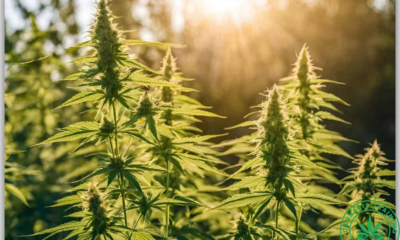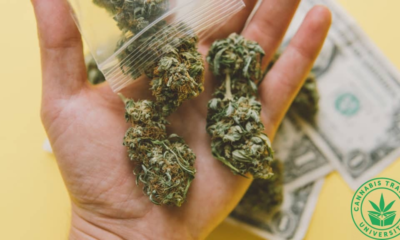Training
The Cannabis College Germany – Best Weed School in Germany
Published
4 days agoon
By
admin
If you’re interested in growing your cannabis hobby or career in Germany, enroll in the Cannabis College Germany.
Cannabis Training University offers students worldwide, including those in Germany, the opportunity to expand their knowledge and gain valuable experience in the cannabis industry.
Germany Cannabis University: Higher Education Abroad
As a world-recognized educational leader, Cannabis Training University offers the most affordable and comprehensive curriculum on the market.
Online Access
No need to drive through city streets or the Autobahn to get to your class. All CTU classes are offered online and based on your schedule.
Learn at home on your computer or make the most of your work commute on the bus by getting a few lessons done on your phone. It’s completely up to you. Classes are available 24/7 with an internet connection.
Flexible Schedule at The Cannabis College Germany
When you enroll in the Cannabis College Germany, you get twelve-weeks of access to the entire curriculum including thousands of pages of ebooks, hundreds of hours of video, and tons of additional resources, all assembled by experts in the industry.
The coursework is 42 hours. You can complete the course in as little as a week or take up to twelve weeks without having to worry about hard deadlines. It’s the perfect curriculum to fit into your busy schedule.
Value-Based Learning
There’s no need for scholarships when you enroll in CTU. Our affordable price point is accessible to nearly anyone who wants to learn about the industry.
Compared to other cannabis colleges, CTU’s value exceeds the industry standard. For just a small investment, you can jump-start your journey into the cannabis world.
Comprehensive Curriculum
If you’re excited to learn about the industry, CTU gives you the most comprehensive coverage of the market ranging from the plants’ cultivation to their sale.
There’s no need to choose a single subject area of focus. The Cannabis College Germany covers your country’s cannabis regulations and the rest of the world’s. Here are just a few of the topics covered in the courses:
- Cannabis cultivation
- Cannabis medicine
- Cannabis cooking
- Cannabis extraction
- Cannabis careers
- Cannabis business
Cannabis Jobs in Germany
Medical cannabis has been legal in Germany since 2017. Germany has been evolving its cannabis laws particularly in recent years, as the country moves to broader legalization and regulation of cannabis.
In 2023, Germany’s federal government announced plans to legalize recreational cannabis. The legalization framework includes regulated sale and personal possession.
In Europe, Germany is the largest cannabis market, but competition is heating up in the rest of Europe.
It’s easier than ever for patients to receive a prescription from a cannabis-friendly practitioner.
Cannabis companies in Germany are on a hiring spree. With promising prospects in the future, everyone from cultivators to processors to distributors is looking for local talent to move forward their business.
Here’s how you can put yourself in the best position to get hired in the industry:
- Enroll in Germany Cannabis College: Learn from experts in the industry about the history of cannabis, the current state of the industry, and every major area of the market including cultivation, extraction, medicine, and more.
- Build your skills: Apart from industry experience, cannabis companies are looking for candidates with previous experience in a related field. Whether it’s web programming or sales, you must have at least one year of experience to even be considered for the job.
- Build your resume and apply: Once you have the right experience and education, you can create your resume and cover letter showcasing your highest achievements and distinguished honors. Search online job boards including the European Cannabis Job Board where you’ll find a range of part-time, full-time, freelance, and internship positions.
Get Cannabis Certified
Do you want to be ready for the inevitable German recreational market? Do you want to find work in Europe’s most promising cannabis industry?
Enroll in Cannabis Training University’s Cannabis College Germany today!
Earning your certificates from CTU provides the competitive edge you need to secure a job in the cannabis industry. Even without prior experience, our classes equip you with the essential knowledge to jumpstart your career and make an immediate impact. Don’t wait for opportunities to pass you by-start pursuing your dreams today!

Fred Hernandez
Fred Hernandez is a highly accomplished and versatile writer, boasting an extensive background in the cannabis industry. With an in-depth understanding of various sectors including cultivators, processors, retailers, and brands, Fred’s expertise spans across the entire cannabis landscape. As a prominent contributor to CTU, he consistently delivers insightful articles exploring the latest developments, news, and regulations shaping the cannabis industry. Whether it’s delving into the intricacies of cannabis products, cannabis strain reviews, or providing comprehensive analyses of cannabis laws, or sharing expert insights on cannabis cultivation techniques, Fred’s wealth of knowledge positions him as an invaluable writer and educator for all cannabis-related subjects.
Training
How to Open a Dispensary in Massachusetts
Published
10 hours agoon
January 6, 2025By
admin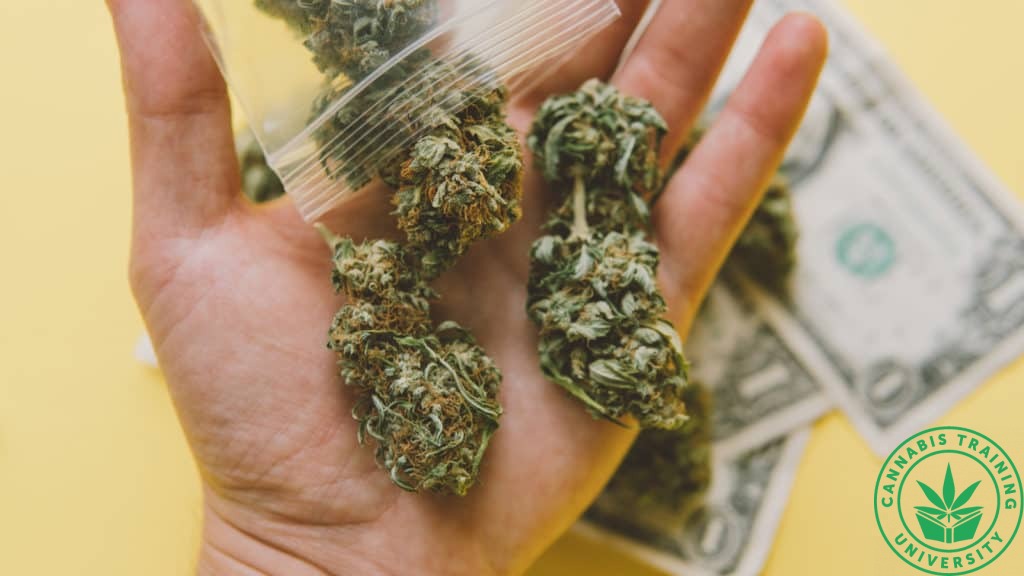
Massachusetts paved the way for the East Coast’s recreational market when it became the first state in the region to open the doors for adult-use shops.
Now, it’s your turn to provide high-quality service and products to customers in need.
Opening a Cannabis Dispensary in Massachusetts
If you’re planning on opening a dispensary in Massachusetts, it’s important to understand the laws and regulations of your state, county, and city to remain compliant. Get to know both the medical and recreational retail side of the law.
Next, you’ll need to develop a business and operations plan for your retail establishment. With a solid business plan in hand, you can obtain financing from investors to meet the high startup costs of opening a dispensary.
After determining the corporate structure of your business and your business partners, you’re ready to apply for the right type of dispensary license and registration.
Complete the application for the proper license on the Cannabis Control Commission’s (CCC) website and pay the associated license and background check fees. You’ll need to set up and account first.
Now, it’s time for the fun part. Choose your facility location while remaining compliant with state and local laws. Hire a staff of budtenders, security personnel, managers, and supporting staff.
Build relationships with cultivators and manufacturers to find the best products available for your customers.
Of course, the process is more complex than the considerations listed above, but it’s a general overview of what you can expect when opening a dispensary in The Bay State.
Cannabis Dispensary Restrictions
Cannabis dispensary restrictions vary by state and local law. In Massachusetts, no person can obtain more than three marijuana treatment center or marijuana retailer licenses.
There is no residency requirement, but only a domestic entity registered to do business in the state can apply to become a registered marijuana dispensary.
Completing the Application to Open a Dispensary in Massachusetts

Prospective dispensary applicants can head on over to the CCC’s website to apply for a dispensary license. If no licenses are available, sign up for the email notice list to be the first one to receive announcements from the CCC.
To begin, create an account to enter the Massachusetts Cannabis Industry Portal (MASSCIP). Once you’re in, you will scroll down until you find the option to “Apply for a Marijuana Establishment License.” Click on “View More.”
Scroll down on the page until you find the option to “Apply for a Marijuana Retailer License.” Click “Start Application.”
All cannabis businesses must complete all three sections of the application:
- Application of Intent
- Background Check
- Management and Operations Profile
MTCs, in particular, must include the following plans, policies, and procedures in the Management and Operations Profile section:
- Plan to provide reduced cost or free marijuana to patients with documented verified financial hardship;
- A plan to comply with delivery regulations, if applicable;
- Operational plan for the cultivation of marijuana in compliance with 935 CMR 501.120, including pesticide use; and
- A list of all products that applicant plans to produce with the following information:
- Description of types, forms, shapes, colors, and flavors of products;
- Methods of production;
- Safety plan for the manufacture and production of products in compliance with 935 CMR 501.130; and
- Sample of any unique identifying mark that will appear on the product
Marijuana retailers (adult-use) shall include a detailed description of the applicant’s proposed plan for obtaining marijuana from a licensed marijuana establishment in the Management and Operations Profile section.
Previously designated MTC priority applicants or Economic Empowerment applicants may have priority status in the application process, meaning the commission will review these applications before others.
The commission will send you a notice when your application is deemed complete. In the notice, you will find payment instructions for a background check, fingerprint instructions, and notifications that the application process will proceed. Provisional license applicants are required to pay fees within 90 days.
If you wish to apply by mail, send your completed application forms to:
Cannabis Control Commission
101 Federal Street, 13th Floor
Boston, MA 02110
Massachusetts Dispensary Fees
The following cannabis licenses must be renewed annually. Application fees, however, are paid once at the time of application.
To open a recreational dispensary in Massachusetts, here are the fees you must pay:
- Application Fee: $300
- Marijuana Retail Store License: $5,000
If you want to open a Registered Marijuana Dispensary (RMD), you’ll need to pay:
- Application Fee: $1,500
- Management and Operation Profile: $30,000
On top of the initial application fees, startup businesses in Massachusetts will need anywhere from $250,000 to $1 million including consulting fees, permits, and associated costs.
Massachusetts Cannabis College
CTU offers budding entrepreneurs with cutting-edge marijuana training. Our cannabis classes are available worldwide to anyone with internet access. Whether you live in Massachusetts, California, or any other legal state, you can learn how to open up a dispensary.
Our curriculum takes you through the basics of marijuana laws, marijuana cooking, marijuana extraction, and marijuana cultivation so you have a comprehensive overview of the industry as a whole. Knowledge is power.
Take your business prospects to the next level by completing your cannabis certification at CTU.

Fred Hernandez
Fred Hernandez is a highly accomplished and versatile writer, boasting an extensive background in the cannabis industry. With an in-depth understanding of various sectors including cultivators, processors, retailers, and brands, Fred’s expertise spans across the entire cannabis landscape. As a prominent contributor to CTU, he consistently delivers insightful articles exploring the latest developments, news, and regulations shaping the cannabis industry. Whether it’s delving into the intricacies of cannabis products, cannabis strain reviews, or providing comprehensive analyses of cannabis laws, or sharing expert insights on cannabis cultivation techniques, Fred’s wealth of knowledge positions him as an invaluable writer and educator for all cannabis-related subjects.
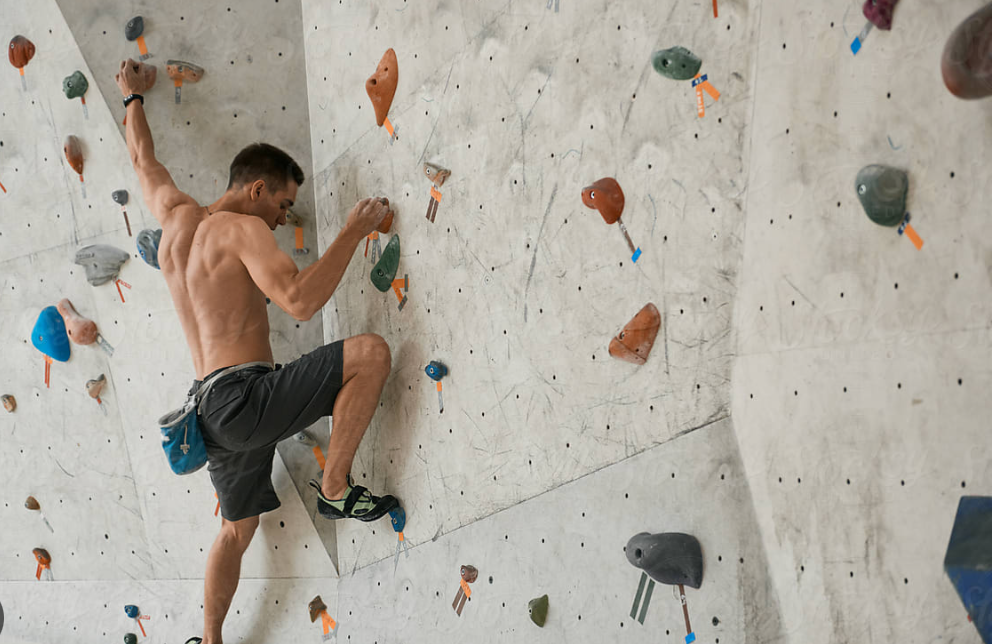
Bouldering and rock climbing have exploded – can cannabis help with this hot activity?
Even 5 years ago, rock climbing and bouldering were niche activities for those with a passion. But since it has become a fun, core strengthening, urban activity and is now a multi-billion dollar industry. Cities, towns and cruise ships now have climbing gyms and the popularity as soared. North American climbing gyms alone almost reached $1 billion dollars last year, this doesn’t count outdoor, equipment and other markets. With its popularity, it blends in with other lifestyle options, so here are key tips on bouldering and marijuana.
RELATED: Marijuana And Exercise, All Part Of The Healthy Cannabis Life
France is was the birthplace of modern bouldering. Pierre Allain, a pioneering French climber in the mid-20th century, loved the Fontainebleau forest and was among the first to see bouldering as a unique discipline within climbing, not just a training tool. He developed climbing shoes with rubber soles, increasing climbers’ ability to grip the rock, a revolution which helped bouldering gain recognition as a legitimate sport. Around the same time in the US, a gymnast as well as a climber, John Gill approached bouldering with a focus on strength, balance, and dynamic movement. Regarded as the father of modern bouldering, he introduce the concept ‘clean climbing’ – leaving no trace on the rock – which has influenced generations of climbers to respect and protect the natural environment.

A Climbing Magazine anonymous survey of professional climbers a couple years ago, in which most said they used it for recovery while others said they sometimes climbed while using cannabis. A deeply-researched review conducted by scientists, including members of the World Anti-Doping Agency and National Institute on Drug Abuse, found that “the use of cannabis as doping will not help to gain a competitive edge by any means.” But the review also highlighted how cannabis can help athletes deal with anxiety in high-pressure situations—climbing includes plenty of high-pressure situations—and “play a major role in the extinction of fear memories” from traumatic athletic events, such as suffering a tough whipper or something more serious.
RELATED: Science: Cannabis Does Not Make You Lazy After All
“Cannabis improves sleep and recovery after an event, reduces anxiety and fear and aids the forgetting of negative events such as bad falls and so forth,” researchers wrote. “Cannabis enhances sensory perception, decreases respiratory rate and increases heart rate; increased bronchodilation may improve oxygenation of the tissues.”

Marijuana can also help you in the gym during training sessions. A University of Colorado study concluded using marijuana before exercise “increases motivation” as well as “enhances recovery from exercise.” Recovery is huge, particularly in sports brutal on the body like climbing. Professional athletes in football, basketball, hockey, fighting, and even golf have all come out in favor of using cannabis as a recovery tool, with some saying CBD is enough.
RELATED: How To Use CBD For A Better Night’s Sleep
More than those other sports, though, safety is of the utmost importance while climbing. Combining marijuana and climbing should be done with serious intention and without harming belay partners or fellow climbers. An online survey conducted by Training Beta, a website dedicated to rock climbing training, explored how readers felt about the relationship between climbing and cannabis. Among 1,462 respondents, 47% said they weren’t comfortable with high belayers and 46% responded that it depended on the setting and person belaying them.
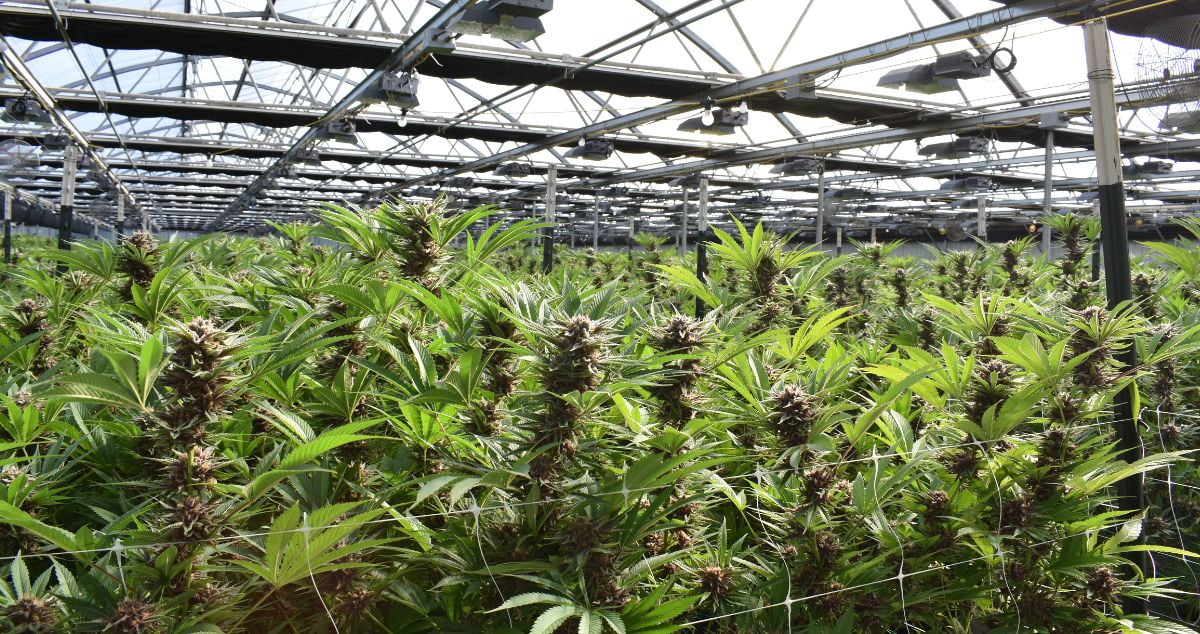
Marijuana cultivation is a hobby that keeps on giving, and techniques like cannabis plant training can take your grow to the next level. Once you have a few harvests under your belt with our Harvest Guide and a successful light and nutrient schedule with our Plant Care Guide, you’re ready for the next step. Optimize your output and increase yields by training cannabis plants as you grow them.
Plant training is a cultivation technique that involves manipulating marijuana plants with tie-downs, unique trimming, trellises, and more to increase the number of bud sites and yields. Because cannabis is such a vigorous plant, it will continue to thrive in these conditions. It will also expose more of the plant to light, allowing for more uniform buds in your grow.
What is cannabis plant training?
Few things pique a grower’s interest more than “increased yields,” and training cannabis plants does not disappoint. The great thing is that you don’t need to change the environment or anything in your lights to see drastic improvement. Physically forcing the cannabis plant to grow in a preferred way lets you avoid the natural tendency to end up looking like a Christmas tree with one single massive cola. Cannabis plant training creates multiple smaller bud sites allowing your plants to be more efficient with your resources.
Training cannabis maximizes the time and energy you put into your grow; there are multiple different plant training techniques to do this, including bending, pruning, and more, covered below. Many of the methods can be combined to increase effectiveness. Relying on the resilient nature of the cannabis plant and a good amount of patience, you can have a sea of green in your tents and a harvest of uniform buds at the end of the line. Training plants also has additional benefits, including controlling airflow and humidity and creating an even canopy.
What is the best time to train cannabis plants?
Most cannabis plants can benefit from plant training. It’s generally always recommended, but when to begin and how long to proceed varies based on the chosen technique. The first caveat is that you want to avoid damaging or pruning auto flowers heavily due to their fixed timeline, and the second is that you don’t want to train late in the lifecycle during flower. The luxury of an extended vegetative stage for photoperiods allows for more intense training.
When your plant canopy lacks uniformity, it may be a sign that it’s time to begin cannabis plant training. With indoor lights covering a specific area, you want to ensure the plant fully utilizes that space. Naturally, growing cannabis plants will create a canopy with high points at the top center cola and low points at the bottom, creating cannabis of different structures and quality across the plant. Another sign of a need for training in your cultivation practice is larf or small airy buds on the lower sections of the plant. Eliminate these bud sites to save energy or expose them to more light with cannabis plant training.
Avoid these mistakes when training cannabis plants
In addition to the specifics below, there are a few general guidelines to remember when training cannabis plants. While cannabis will recover from overtraining or trimming, it will take time.
- If you stress the plant too much, you may stunt its growth instead of improving it. A little goes a long way; be thoughtful about your actions here and watch how your plants respond to discover that fine line for your setup.
- Wait until plants grow to the sixth node before starting your training, and don’t start anything late into your plants’ flowering period. Remember to move the plant around slowly and carefully to avoid that sad sound of a snapping branch when training plants and support those improved buds to keep them healthy.
You’ll need cultivation scissors for trimming, soft plant ties for holding branches down, and screens or nets for sea of green methods. Use stakes and trellis systems to support cannabis plants and twine to create cages or nets. You’ll also need a good awareness of your plant timeline and the methods you’re using to avoid stressing your plants out too much. Experience is also valuable here, so start training cannabis plants today if you haven’t already to get a few reps with it.
What is the right training technique for your plants?
Knowing the variables and details of your setup and goals is necessary to answer this question. When picking the proper training technique for cannabis plants, read the quick summaries below. Then explore our range of how-to articles and Grow Bible to understand the options, along with the pros and cons of each technique.
Low-Stress Training (LST)
Low-Stress Training (LST) is exactly as it sounds – a minimally invasive technique for cannabis plant training. By tying down new growth on the plant, you open it up and allow more light to reach the center and lower branches of the plant. This method works well when paired with topping but can work without topping too.
Using ties, twine, or plant tape along with clips or drilled holes around the edge of your pot, you can train your cannabis plant slowly and avoid causing stress. As new growth appears from the main stem and gets long enough to tie down, continue doing so to create a nice, even canopy and high-yielding plant. It may look odd at first, but when you see the results during the flowering stage, you’ll understand.
Read our in-depth guide on how to apply low-stress training to learn all of the ins and outs of this technique.
High-Stress Training (HST)
High-Stress Training (HST) is a heavier-handed cannabis training technique encompassing a few different methods we’ll discuss later in this article. Topping, along with any training methods that damage or break the plant intentionally when bending or cutting, is an example of HST
This technique is often done before the plant enters vegetation to allow enough time for recovery. While these methods may surprise you, again, seeing the results will change your mind and increase your awe for the cannabis plant overall. Abrupt training like HST will deliver energy to lateral branches across the plant instead of focusing it on the top center colas.
To see exactly how to apply this more intense training method, check out our high-stress training guide.
Manifolding
Manifolding is a form of cannabis plant training that falls under HST. At its core, this is a result of sequential topping. Instead of removing the apical meristem once, you repeat this process every few nodes to create an array of branches, each producing a solid flower like a main cola would. Without the apical meristem found at the top of growing plants, their energy is more uniformly diverted across the plant.
To achieve the manifold effect, split the plant in two during topping. Then after a period of growth, split those main branches further in two to create four and then eight sites. When done in the proper environment, you’ll get a picturesque cannabis plant with eight long, even dense colas. While invasive, this technique can produce wonderful results quickly and reduce the chance of rot that could occur in larger buds.
Where some techniques have you constantly making adjustments like LST, manifolding sets the plant up for success early in its lifecycle.
To learn how to do this properly, read our guide that explains how to manifold like a pro.
Lollipopping
Lollipopping is another HST cannabis plant training method. Lollipopping takes that natural Christmas tree look and manicures it down to a lollipop by trimming all growth to a certain point on your cannabis plants. By doing this, you encourage the plant to focus energy on the topmost colas.
When lollipopping, remove any leaves that are not in the light. Anything that would be obscured by buds at the top of the plant is removed. Visualizing a line across your canopy and trimming the growth below that line is helpful. An added benefit is the airflow each plant can get by freeing up the layers below the main canopy.
We show you exactly how to do this correctly in our pro guide to lollipopping.
Sea of Green
Sea of Green (commonly known as SOG) creates an even canopy that cannabis plant training uses to maximize light use. But instead of directly bending, tying down, or altering your plants, this method forces plants to flower early. That said, don’t try this on your autoflowers.
The goal is to flower photoperiod plants young in order to keep a low footprint for each plant. This lets you pack in as many plants as possible under the lights.

Shop Feminized Seeds
- Female plants for healthy bud
- Quality genetics, high yields
- All popular cultivars
Instead of harvesting 3-5 large plants, you’ll be taking down 15-20 small plants. The result is a dense canopy of smaller plants and a higher yield harvest than larger plants that may take up valuable space under the lights. This approach is good when space is at a premium. It also pairs very well with lollipopping. Before you flip the young plants to flower, lollipop them first to grab your clones for the next round.
Our in-depth guide on how to grow a Sea of Green will help you through the process.
Scrogging
Scrogging is a common technique that creates a “Sea of Green” look to the canopy by securing a screen or net across the canopy at a fixed height. New growth is tied to the screen exposing the whole branch to light. This method optimizes a small space and creates a uniform and plentiful harvest.
The support scrogging provides is also excellent for the plant. As the buds mature and become heavier, the screen can hold them up, preventing unnecessary breaks or bends in late flower. This is one of the easier techniques to get started with in cannabis plant training, and sure to provide improved harvests.
Our scrogging guide shows you how to set up and maintain a proper scrog.
Super Cropping
Super Cropping is an interesting technique that also qualifies as HST. This method involves carefully breaking the stalks of the cannabis plant. You read that right! The trick here is to bend and snap the inner tissues of the plant without damaging the outer skin. Plant tape and/or duct tape are your friend if you make a mistake or two. Do this step early in veg to allow for ample recovery time.
Bending your plant’s stem slowly to a 90-degree angle and tying it that way for a week or two of growth encourages a screen of green kind of lateral growth without using a screen. There’s even a theory that this may increase THC production on the super-cropped branch. The results resemble LST, and the techniques can be combined for a hybrid approach. The key is visualizing a canopy line and uniformly bending things to that level. This method can also be combined with lollipopping to focus energy at the top, but space your training out to avoid stressing the plants out.
Learn how to super crop your plants without doing (too much) damage in our super cropping guide.
Monster Cropping
Monster Cropping continues the trend towards interesting but can provide excellent results and a unique, efficient plant structure. This method harnesses the plant’s response to stress and optimizes the grow. Monster crop by waiting for plants to reach mid-flower stages, then take clones to essentially “re-veg” your plants, putting the clones back through a second veg cycle. The stress of this stage change creates vigorous plants with more bud sites and bushier growth.
While I haven’t tried monster cropping, many claim monster-cropped clones outpace standard clones in production. Remember, this method will not work for autoflowers; once they start flowering, there is no going back. Check out our selection of autoflowering seeds to find the right seeds for your monster grow!

Buy Autoflower Seeds
- For new and experienced growers
- Easy-growing, low maintenance
- All popular cultivars
The stress of this process will kill off a few clones in the beginning, so make sure to take more than you need. You can combine this method with many of the others listed in this article, as Monster Cropping is more of a cloning technique than a trimming or training process but still falls under HST in cultivation.
Learn more about this crazy but effective technique in our monster cropping guide.
Trellising
Trellising is a necessary evil in cannabis cultivation. As your plants get heavier as they mature, they fall over and can eventually snap if left unattended. This is why plants in early flower are trellised with netting or twine and stake solutions to support flower growth through harvest. Trellising can be notoriously difficult to reuse due to sticky harvests, so handling this in a quick and/or disposable way is worth considering.
There are many different approaches to trellising; you can use premade solutions like cages or custom build frames to trellis up sections of your grow. Where the scrogging method adds a screen to the top of the canopy, trellising puts this around the entire plant. Outside of the support given, the trellis provides many tie-down locations for combination with other LST and HST cannabis training techniques.
We’ll show exactly what we mean in our trellising guide.
Schwazzing
Schwazzing is defoliation taken to the extreme. Typical defoliation may remove excess fan leaves or lollipop plants. Schwazzing removes 100% of the fan leaves of a cannabis plant. This process can be done once or twice in the flowering stage of your grow. Complete your first shwazze on day one of flowering, with an optional second around day twenty.
While it may sound like overkill, this method increases airflow and light penetration and directs energy allocation to the maturing flower. Schwazzing can increase yields and is combinable with many of the methods listed in this article to create an even or manifolded canopy while performing LST or HST.
Make sure you read our schwazzing guide before attempting this extreme defoliation method!
How do you train cannabis plants for maximum yield?
So which method is right for you and your grow? Your ideal training program will depend on your goals for the plants and your interest as a cultivator. Don’t feel pressured to combine three or more methods. Start simple, and when in doubt, use LST.
The way I learned and what I currently prefer is topping in veg once, along with some LST, followed by a lollipop in late veg/early flower. I then apply a trellis with an optional semi-schwazze mid-flower. My next batch will be my first attempt at manifolding, which I’ll run along with scrog and monster-cropped clones. The methods here and their various combinations will unlock potential in your grow and optimize the flower quality and quantity.
Are you plant training? Leave a comment below with the methods you’re using or those you plan to try later and don’t forget to grab some fresh genetics from our curated seed collection.
Keep on growing!

Justin Trudeau’s Long Involvement With Cannabis

Sherry Is Becoming A Thing Again

What Is Delta 8? Delta-8 Ultimate Guide

Amsterdam Weed Prices Ultimate Guide

7 industry predictions for 2025

How to Open a Dispensary in Massachusetts

Cannabis Jobs in New Hampshire

How to Become a Budtender in Washington

A shortage of prescribed medical cannabis supply has led to Australian patients being left stranded, according to the Legalise Cannabis Queensland Party (LCQP).

Pennsylvania Marijuana Jobs | CTU

Distressed Cannabis Business Takeaways – Canna Law Blog™

United States: Alex Malyshev And Melinda Fellner Discuss The Intersection Of Tax And Cannabis In New Video Series – Part VI: Licensing (Video)

What you Need to Know

Drug Testing for Marijuana – The Joint Blog

NCIA Write About Their Equity Scholarship Program

It has been a wild news week – here’s how CBD and weed can help you relax

Cannabis, alcohol firm SNDL loses CA$372.4 million in 2022

A new April 20 cannabis contest includes a $40,000 purse

Your Go-To Source for Cannabis Logos and Designs

UArizona launches online cannabis compliance online course
Trending
-

 Cannabis News2 years ago
Cannabis News2 years agoDistressed Cannabis Business Takeaways – Canna Law Blog™
-

 One-Hit Wonders2 years ago
One-Hit Wonders2 years agoUnited States: Alex Malyshev And Melinda Fellner Discuss The Intersection Of Tax And Cannabis In New Video Series – Part VI: Licensing (Video)
-

 Cannabis 1012 years ago
Cannabis 1012 years agoWhat you Need to Know
-

 drug testing1 year ago
drug testing1 year agoDrug Testing for Marijuana – The Joint Blog
-

 Education2 years ago
Education2 years agoNCIA Write About Their Equity Scholarship Program
-

 Cannabis2 years ago
Cannabis2 years agoIt has been a wild news week – here’s how CBD and weed can help you relax
-

 Marijuana Business Daily2 years ago
Marijuana Business Daily2 years agoCannabis, alcohol firm SNDL loses CA$372.4 million in 2022
-

 California2 years ago
California2 years agoA new April 20 cannabis contest includes a $40,000 purse






